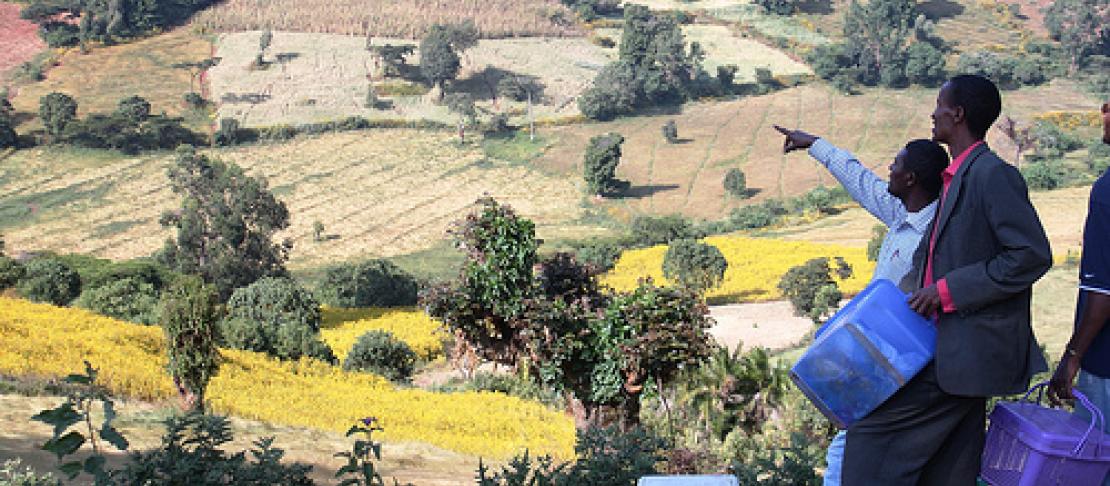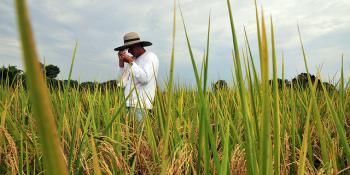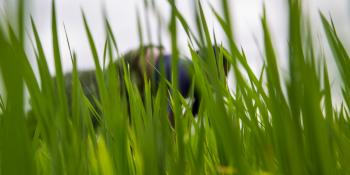From field to landscape: Tackling mitigation and livelihoods with help from farmers

An example of how CCAFS and its partners are moving from the research desk to action on the ground while supporting local communities is ”the SAMPLES approach”. Systems Analyst Mariana Rufino recently discussed how the ‘Standard Assessment of Mitigation Potential and Livelihoods in Smallholder Systems’ - the SAMPLES approach- helps address pro-poor mitigation challenges in developing countries.
Smallholder activities impact, and are impacted by, the constraints of their surroundings. Understanding these cross-scale interactions, between agriculture and the environment, could help generate a range of ecosystem services for which smallholders’ livelihoods depend. One key concern however is that there is no data on mitigation. The goal of this SAMPLES approach is therefore to develop a low-cost protocol to quantify greenhouse gas emissions and to identify mitigation options for smallholder at whole-farms and landscape levels.
Read: Moving mitigation forward: Improving quantification of agricultural greenhouse gases
The SAMPLES approach studies however not only mitigation practices, but it also aims at identifying their space within farms and landscapes. The logic behind this is that for mitigation to be pro-poor it shouldn’t affect food production and income generation, and therefore a landscapes ”re-design” might be needed. This will create opportunities for intensification of agriculture possible with increased GHG emission per unit of land in some limited areas but will also provide room for forests and rangelands to sequester carbon and support biodiversity.
More on landscapes: If landscapes are a sum of their parts: how do we measure them?
The way SAMPLES envisages successful mitigation is by creating capacity to analyse the challenges across scales from field to landscape, and by including key land users - the ultimate decision makers on adoption of mitigation options. It applies a multi-element approach that includes protocol development, field testing and research, capacity building, and global priority setting.
View Mariana’s presentation from the session and learn more about the SAMPLES approach:
By the end of 2013, the SAMPLES project foresees to have tested the approach in a few CCAFS benchmark sites, to have trained students, technicians and scientists to implement the approach elsewhere, and have aligned with other research centres, academia, NGOs and governments to improve methods and outreach.
Through creating more local research capacity to analyse such challenges across scales, from field to landscape, and by including key land users - the ultimate decision makers on adoption of ”mitigation options” – the SAMPLES team is aiming to link knowledge with actions that reduce greenhouse gas emissions.
Mariana Rufino held her session at a special “Linking research with action” inspired side event at the UC Davis Conference. Read and discuss the other sessions, focusing on turning research into action:
- Gender attitudes and practices investigated in Bangladesh
- Turning research into actions that matter
- "Reaching farmers with climate information is mission possible"
Mariana Rufino is a livestock systems scientist at the International Livestock Research Institute (ILRI). Read more reports from the conference on our blog and on twitter @cgiarclimate using #climatesmart. Story edited by Cecilia Schubert, CCAFS Communications Assistant.



